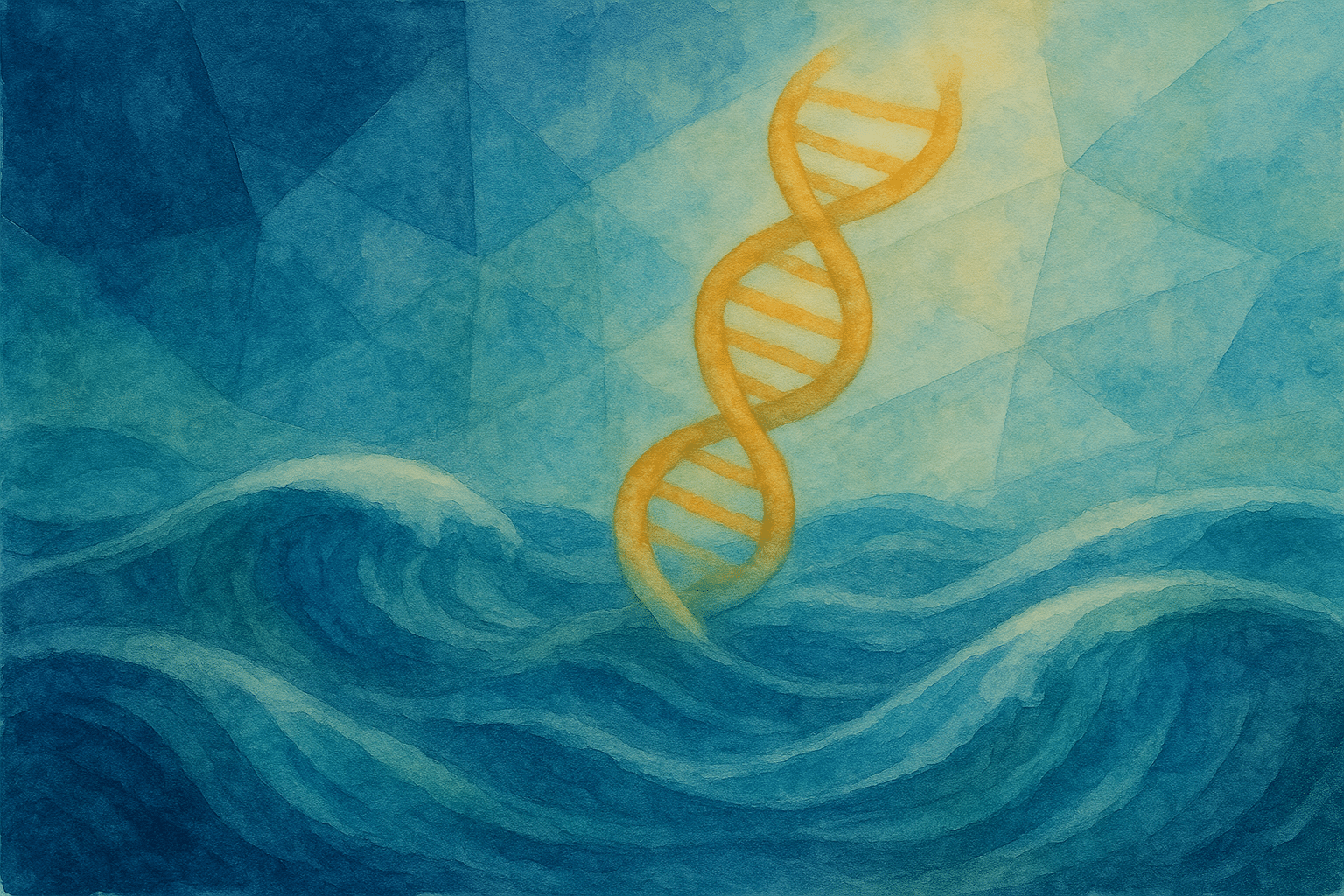When an individual is struggling with both a substance use disorder and depression, it can feel like a double burden — heavy, confusing, and deeply isolating. Yet this combination of mental health and substance use challenges is incredibly common. Research shows that depression and substance abuse often go hand in hand, with each condition intensifying the effects of the other (Grant et al., 2004).
In this blog, we’ll explore the strong link between depression and drug abuse, how biology and behavior play a role, and why dual diagnosis treatment at STR Behavioral Health — which addresses both conditions together — is the most effective approach for long-term recovery.
The Common Link Between Depression + Substance Use Issues
The connection between depression and substance abuse is well-documented. Individuals living with major depressive disorder (MDD) are significantly more likely than the general population to develop a substance use disorder (SUD), and those with substance use challenges are at increased risk of developing depression. These co-occurring conditions are part of what’s known as a dual diagnosis.
- Nearly one-third of individuals with depression also struggle with addiction.
- More than 50% of those struggling with a substance use disorder also experience a mood disorder at some point in their lives (Hasin et al., 2007).
This isn’t just a statistical coincidence — it reflects the deep biological and emotional ties between the two disorders.
Why Depression + Substance Abuse Often Happen Together
There are many reasons why depression and drug abuse often develop alongside each other. These reasons go beyond willpower or lifestyle — they are rooted in neurobiology, emotional coping, and behavioral reinforcement.
1. Chemical imbalances in the brain
Both depression and addiction involve changes in brain chemicals like dopamine, serotonin, and norepinephrine. These neurotransmitters regulate mood, motivation, and pleasure. In depression, low levels can lead to numbness or sadness. Substances may offer temporary relief by boosting these chemicals, but over time, they worsen the imbalance, deepening both the addiction and depression (Volkow et al., 2016).
2. Shared brain regions
Brain scans show that the areas involved in emotional regulation and reward — like the prefrontal cortex and amygdala — are affected by both depression and substance abuse. This overlap makes it easy for one condition to trigger or worsen the other (Koob & Volkow, 2010).
3. Self-medication for emotional pain
Many individuals struggling with depression turn to alcohol, opioids, or other drugs as a way to escape painful emotions. This behavior, known as self-medication, is especially common when someone feels hopeless, anxious, or numb (Khantzian, 1997). Unfortunately, while substances may offer short-term relief, they usually lead to deeper distress and dependency.
4. Behavioral avoidance
Depression can cause individuals to withdraw from life, avoiding responsibilities, relationships, or stress. Substance use can become part of this pattern, reinforcing both emotional shutdown and compulsive behaviors.
5. Trauma + early life stress
Individuals who’ve experienced trauma — especially in childhood — are at much higher risk for both addiction and depression. The long-term effects of trauma can alter brain development, emotional resilience, and stress response systems, making co-occurring disorders more likely (Anda et al., 2006).
Read more: What to Expect at a Dual Diagnosis Treatment Clinic
Co-occurring Depression + Addiction Require Dual Diagnosis Treatment
Because depression and addiction are so closely linked, treating them separately isn’t enough. Trying to address one while ignoring the other can actually increase the risk of relapse or leave important symptoms untreated.
That’s where integrated dual diagnosis treatment comes in.
What Is Dual Diagnosis Treatment?
Dual diagnosis treatment is a comprehensive, integrated approach designed for individuals who are experiencing both SUD and a co-occurring mental health condition, such as depression. These conditions frequently occur together and interact in complex ways — one can worsen or mask the other — so treating them simultaneously is crucial for achieving a long-lasting recovery. STR Behavioral Health in Pennsylvania can help.
Here are the key components of dual diagnosis treatment:
1. Integrated treatment of both conditions
Treatment for depression and substance use must happen at the same time, in a coordinated and collaborative manner. This means that clinicians and treatment teams work together to address the full scope of an individual’s mental health and substance use challenges — rather than treating each condition in isolation or requiring abstinence before addressing mental health.
2. Individualized + person-centered care
No two individuals experience depression and substance use disorder in exactly the same way. Dual diagnosis treatment is tailored to individualized care plans that consider each person’s unique symptoms, history, preferences, culture, and goals. Plans may include a combination of therapy, medication, lifestyle interventions, and social support.
3. Evidence-based psychotherapies
Therapies such as cognitive behavioral therapy (CBT), dialectical behavior therapy (DBT), and contingency management are widely used in dual diagnosis treatment. These evidence-based approaches help individuals:
- Challenge negative thinking patterns
- Build emotional regulation skills
- Develop coping strategies
- Increase motivation for change
- Prevent relapse in both substance use and depressive symptoms
4. Medication management (when appropriate)
Many individuals benefit from medication-assisted treatment (MAT) for substance use disorders (such as buprenorphine or naltrexone for opioid use) alongside antidepressants for managing depression. Careful coordination between psychiatrists and addiction specialists ensures medications are used safely and effectively.
5. Relapse prevention + long-term support
Recovery from both depression and addiction is a long-term process. Dual diagnosis programs include education and tools to recognize triggers, manage cravings, and respond to mood changes. Ongoing support may include peer recovery groups, supportive housing, alum networks, and follow-up therapy.
6. Family involvement + social support
Strong, informed social support can significantly improve outcomes. Many programs offer family therapy, education sessions, or support groups to help loved ones understand co-occurring disorders and learn how to support recovery in healthy ways.
7. Holistic treatment methods
Dual diagnosis treatment often includes holistic practices like mindfulness, yoga, nutrition counseling, fitness, and art or music therapy. These interventions support physical and emotional healing, reduce stress, and help individuals reconnect with themselves beyond their symptoms.
8. Continuity of care + recovery planning
Recovery doesn’t end when formal treatment does. A strong aftercare or continuing care plan ensures individuals have the resources, structure, and support needed to maintain recovery and manage symptoms of depression and substance use in everyday life.

Silver Pines
Dual Diagnosis Treatment in Pennsylvania
With expert-led care for co-occurring disorders, we equip clients with essential life skills, coping strategies, and self-awareness for lasting recovery.
Watch the video to learn more.
Healing from Depression + Substance Use Disorder
If you or someone you love is living with depression and addiction, recovery can feel like it’s always out of reach. The truth is, it’s not — you are not alone. These are treatable medical conditions — not moral failures — and thousands of individuals recover every year with the proper support and care.
As a trusted provider of dual diagnosis care in Pennsylvania, STR Silver Pines offers:
- A peaceful, home-like setting
- Licensed clinicians, nurses, and therapists on-site
- Integrated treatment from detox through residential care
- Trauma-informed and compassionate approach
- Support for long-term planning and relapse prevention
Reach out to our admissions team today to start your journey toward healing.
References
- Grant et al. (2004). Epidemiology of MDD and SUD, JAMA, 291(21): 2585–2593
- Nunes & Levin (2004). Treatment of depression in substance users, Am J Psychiatry, 161(1): 9–22
- Hasin et al. (2007). Prevalence and comorbidity of MDD and SUD, Arch Gen Psychiatry, 64(7): 830–842
- Volkow et al. (2016). Neurobiology of addiction and depression, Biol Psychiatry, 81(9): 678–689
- Koob & Volkow (2010). Brain disease model of addiction, Neuropsychopharmacology, 35(1): 217–238
- Khantzian (1997). The self-medication hypothesis revisited, Harv Rev Psychiatry, 4(5): 231–244
- Anda et al. (2006). ACE study on SUD and depression, Am J Prev Med, 30(5): 377–386
- Drake et al. (2001). Integrated treatment for dual diagnosis, Psychiatr Serv, 52(4): 469–476
- McHugh et al. (2014). Outcomes in dual diagnosis care, Subst Abuse Treat Prev Policy, 9(1): 1–10
Contact Us
Take the first step toward recovery today. Call now to connect with a compassionate team member who will answer your questions and guide you through the admissions process.
Prefer we reach out to you? Complete our contact form, and we’ll be in touch soon.
Admissions






